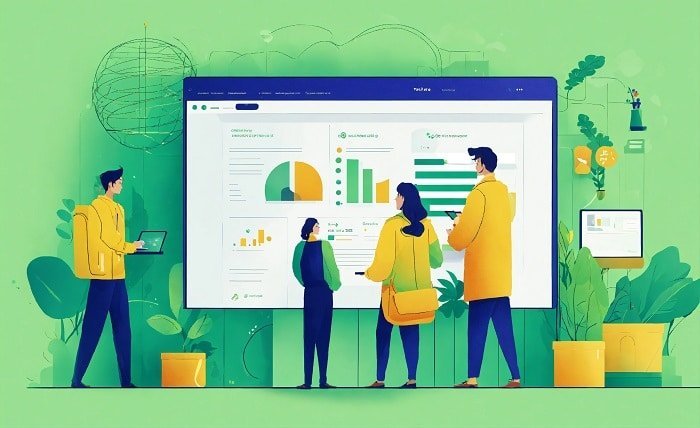Mastering Engine Optimization: The Ultimate Guide to SEO

Introduction
In the digital age, having an online presence is essential for businesses and individuals alike. However, simply having a website is not enough. To truly stand out and attract visitors, you need to optimize your site for search engines. This process, known as Search Engine Optimization (SEO), is a critical component of any successful online strategy. In this comprehensive guide, we’ll delve into the intricacies of SEO, providing you with the knowledge and tools you need to improve your website’s visibility and ranking on search engine results pages (SERPs).
SEO
SEO, or Search Engine Optimization, is the practice of enhancing a website to increase its visibility when people search for products or services related to your business in search engines like Google, Bing, and Yahoo. The better visibility your pages have in search results, the more likely you are to garner attention and attract prospective and existing customers to your business.
The Importance of Keywords
Keywords are the foundation of SEO. They are the words and phrases that users type into search engines to find relevant content. Understanding which keywords your target audience is using allows you to optimize your content to meet their needs.
Finding the Right Keywords
- Brainstorming: Start by brainstorming a list of potential keywords related to your business.
- Keyword Research Tools: Use tools like Google Keyword Planner, SEMrush, and Ahrefs to identify popular keywords with high search volume and low competition.
- Long-Tail Keywords: Focus on long-tail keywords, which are longer and more specific phrases that are less competitive and more targeted.
On-Page SEO Techniques
On-page SEO refers to the optimization of individual web pages to rank higher and earn more relevant traffic. This includes both the content on the page and the HTML source code.
Title Tags and Meta Descriptions
- Title Tags: Ensure your title tags are descriptive, concise, and include your primary keyword.
- Meta Descriptions: Write compelling meta descriptions that provide a summary of the page content and include relevant keywords.
Header Tags
- H1 Tags: Use H1 tags for the main heading of your page, incorporating your primary keyword.
- H2 and H3 Tags: Use H2 and H3 tags for subheadings to improve readability and structure, and to include secondary keywords.
Image Optimization
- Alt Text: Use descriptive alt text for images to improve accessibility and include keywords.
- File Names: Use relevant keywords in image file names.
Off-Page SEO Strategies
Off-page SEO refers to actions taken outside of your own website to impact your rankings within search engine results pages.
Backlinks
Backlinks are links from other websites to your site. They are crucial for SEO as they signal to search engines that your content is valuable and credible.
- Guest Blogging: Write guest posts for reputable websites in your industry.
- Influencer Outreach: Collaborate with influencers to gain high-quality backlinks.
- Social Media: Share your content on social media platforms to increase visibility and attract backlinks.
Social Signals
While social signals (likes, shares, and comments) are not direct ranking factors, they can indirectly influence SEO by driving traffic and increasing content visibility.
Technical SEO Essentials
Technical SEO involves optimizing your website’s backend structure and foundation. This includes improving site speed, ensuring mobile-friendliness, and enhancing crawlability.
Site Speed
- Page Load Time: Improve page load times by optimizing images, leveraging browser caching, and minimizing CSS and JavaScript.
- AMP: Implement Accelerated Mobile Pages (AMP) to improve mobile load speeds.
Mobile-Friendliness
With mobile searches surpassing desktop, having a mobile-friendly site is essential. Use responsive design to ensure your site adapts to all device sizes.
Crawlability
- XML Sitemap: Create and submit an XML sitemap to search engines.
- Robots.txt: Use robots.txt to control which pages search engines can crawl.
Content is King: Crafting SEO-Friendly Content
High-quality content is the cornerstone of SEO. It not only attracts visitors but also encourages them to stay on your site and engage with your brand.
Content Creation Tips
- Originality: Create original, valuable content that addresses your audience’s needs and interests.
- Keyword Integration: Naturally integrate keywords into your content without keyword stuffing.
- Readability: Use short paragraphs, bullet points, and subheadings to enhance readability.
- Multimedia: Incorporate images, videos, and infographics to make your content more engaging.
Mobile SEO: Optimizing for Mobile Users
With the increasing use of smartphones, mobile SEO has become critical. Ensure your website provides a seamless experience for mobile users.
Responsive Design
Adopt a responsive design that adjusts to different screen sizes and orientations.
Mobile-Friendly Content
- Shorter Sentences: Use shorter sentences and paragraphs for easier reading on small screens.
- Clickable Elements: Ensure buttons and links are easily clickable on mobile devices.
Local SEO: Targeting Local Audiences
Local SEO is essential for businesses that operate in specific geographic areas. It helps you attract customers from your locality.
Google My Business
- Profile Setup: Create and verify your Google My Business profile.
- NAP Consistency: Ensure your Name, Address, and Phone number (NAP) are consistent across all online platforms.
Local Keywords
Incorporate local keywords into your content, such as the name of your city or neighborhood.
Reviews and Ratings
Encourage satisfied customers to leave positive reviews on Google and other review platforms.
SEO Tools and Resources
Numerous tools and resources can aid your SEO efforts, providing insights and analytics to optimize your strategy.
Popular SEO Tools
- Google Analytics: Tracks and reports website traffic.
- SEMrush: Offers keyword research, site audit, and competitor analysis tools.
- Ahrefs: Provides backlink analysis, keyword research, and rank tracking.
- Moz: Offers SEO tools for keyword research, link building, and site audits.
Measuring SEO Success
It’s crucial to measure the effectiveness of your SEO efforts to understand what’s working and where you need to improve.
Key Metrics
- Organic Traffic: Monitor the number of visitors coming from search engines.
- Bounce Rate: Track the percentage of visitors who leave your site after viewing only one page.
- Conversion Rate: Measure the percentage of visitors who complete a desired action, such as making a purchase or filling out a form.
- Keyword Rankings: Track the rankings of your target keywords over time.
Common SEO Mistakes to Avoid
Avoiding common SEO mistakes can save you time and improve your site’s performance.
Keyword Stuffing
Overloading your content with keywords can harm readability and lead to penalties from search engines.
Duplicate Content
Ensure all content on your site is unique to avoid confusion for search engines and potential penalties.
Ignoring Mobile Optimization
Failing to optimize for mobile users can result in a poor user experience and lower rankings.
Neglecting Technical SEO
Ignoring technical aspects like site speed, crawlability, and mobile-friendliness can hinder your SEO efforts.
Future Trends in SEO
SEO is constantly evolving, and staying ahead of the curve is crucial for long-term success.
Voice Search
With the rise of smart speakers and virtual assistants, optimizing for voice search is becoming increasingly important. Focus on natural language and question-based queries.
Artificial Intelligence
AI is transforming SEO with tools that can analyze user behavior and provide more personalized search results. Keep an eye on AI-driven SEO tools and techniques.
User Experience (UX)
Search engines are placing more emphasis on user experience. Ensure your site is easy to navigate, loads quickly, and provides valuable content.
Conclusion
Mastering SEO is a multifaceted process that requires a deep understanding of various techniques and strategies. By focusing on keyword research, on-page and off-page SEO, technical optimization, and high-quality content creation, you can improve your website’s visibility and attract more organic traffic. Stay updated with the latest SEO trends and continuously refine your approach to maintain and enhance your search engine rankings.
FAQs
1. What is the difference between on-page and off-page SEO? On-page SEO involves optimizing individual web pages to rank higher, focusing on content and HTML source code. Off-page SEO refers to actions taken outside of your website, like building backlinks and social signals.
2. How long does it take to see results from SEO? SEO is a long-term strategy. It can take several months to see significant results, depending on the competitiveness of your industry and the effectiveness of your SEO efforts.
3. Can I do SEO on my own, or do I need a professional? While you can do basic SEO on your own, hiring a professional can be beneficial for more advanced strategies and to ensure you are up-to-date with the latest SEO practices.



